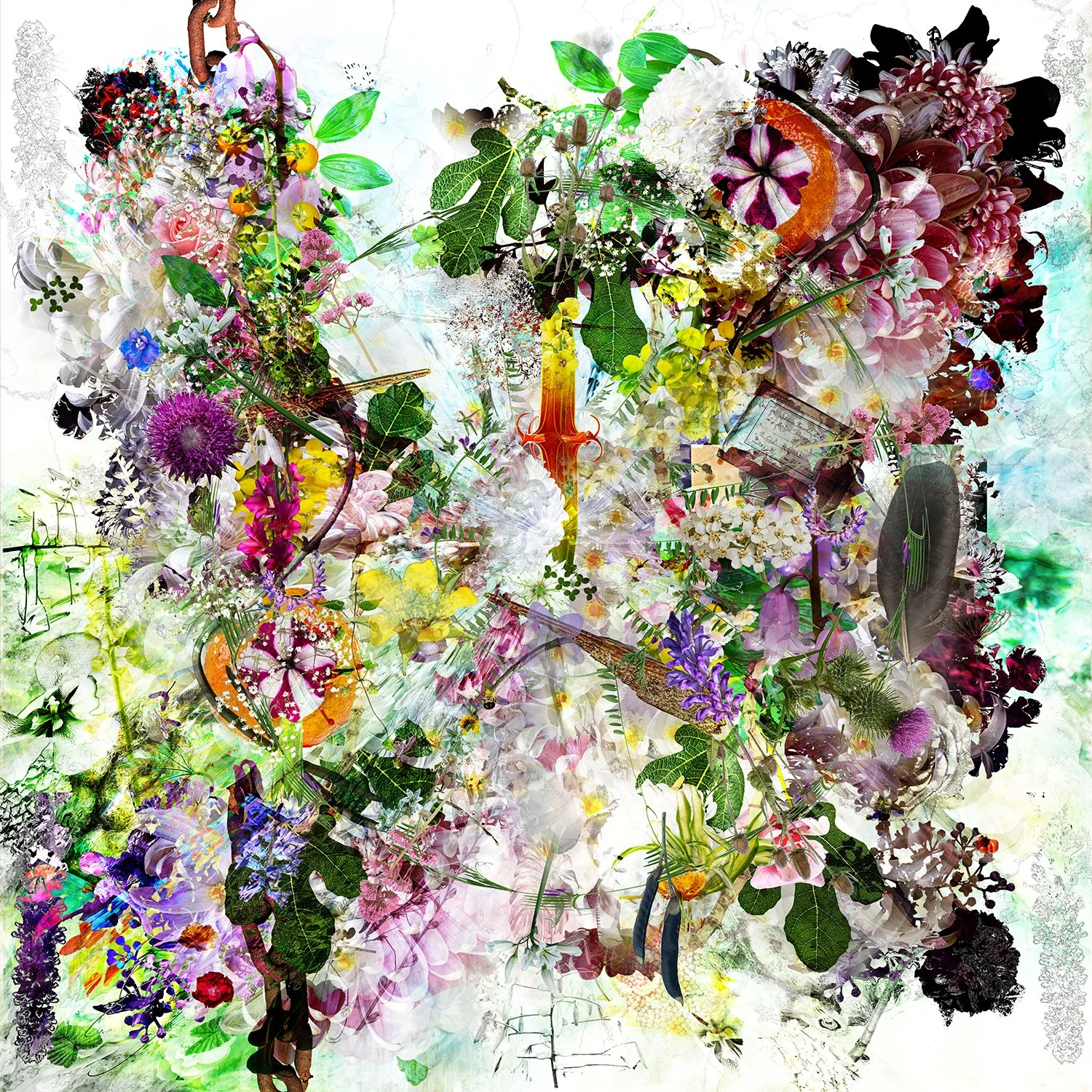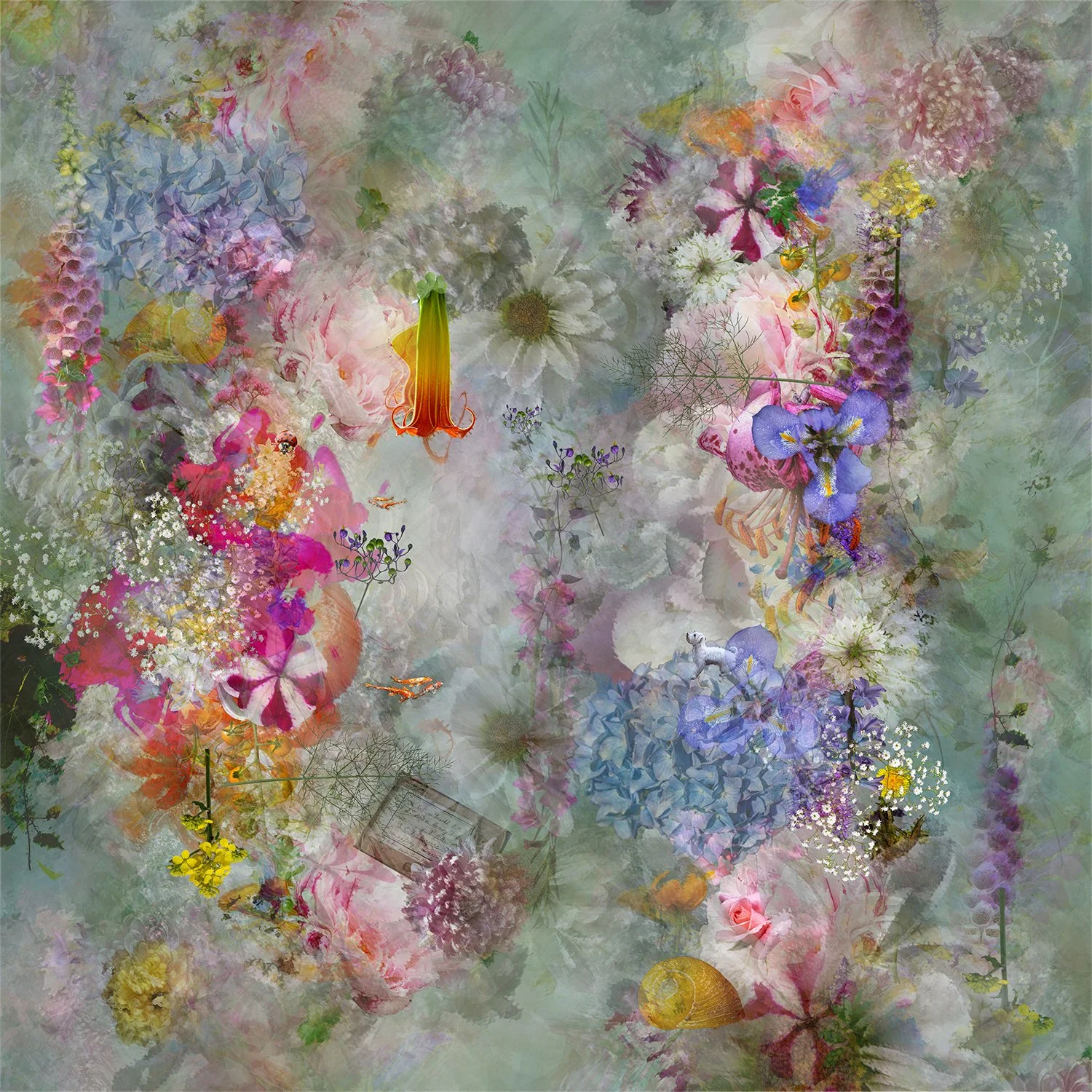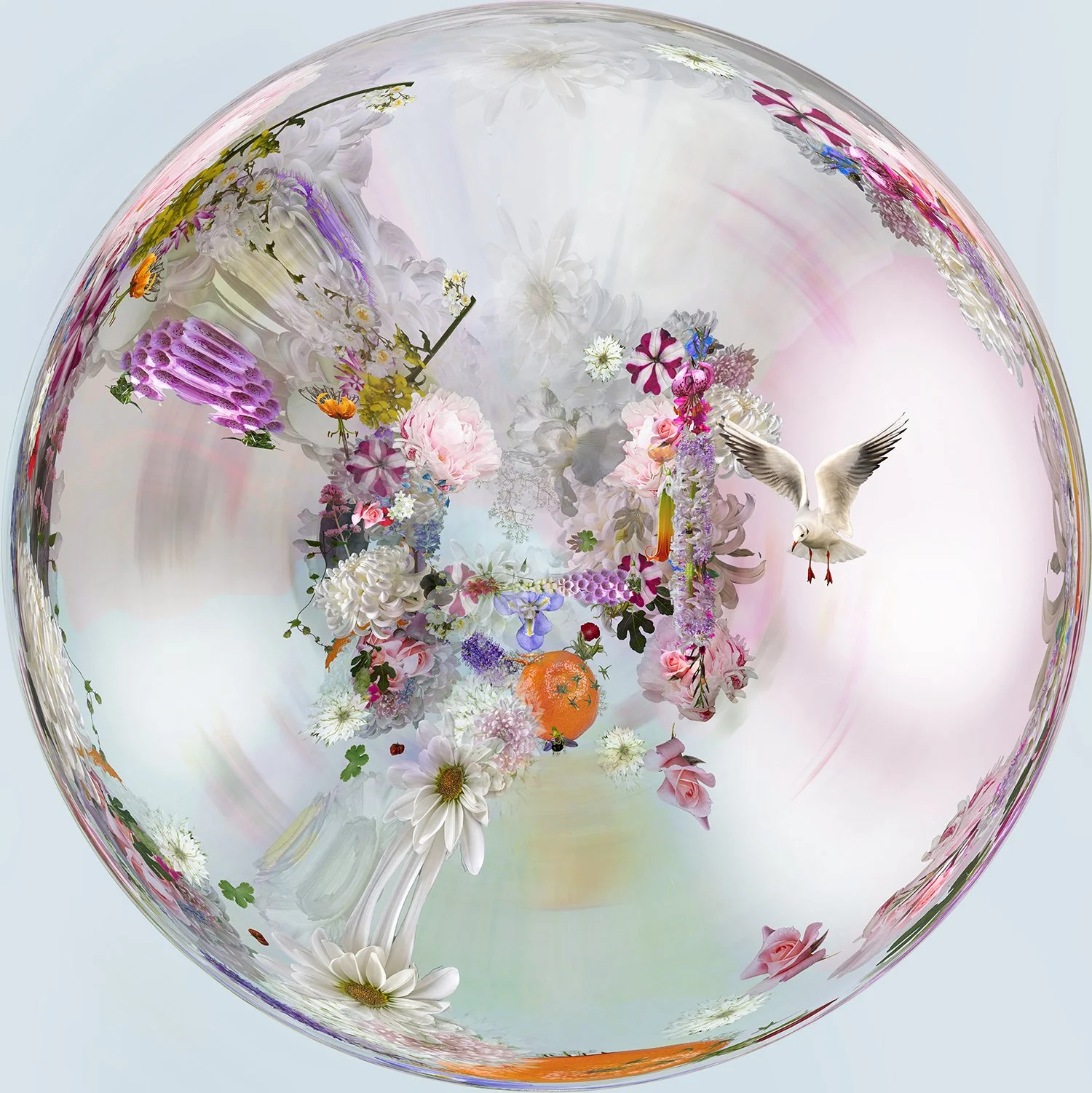THE SUMMONS
The same flowers with their same colours, flowered now and flowered then
1. Flowers, the Time Keepers
This image is part of a series of five photographic collages, each constructed from layers of original photographs I’ve taken. The works form a visual timeline, exploring memory, trauma, and the persistence of beauty.
There is a space between waking and memory—where time does not pass, but gathers. This is where the garden begins. The flowers here are not symbolic. They are sentinels. Their colour has not faded. They bloomed then, as they do now. I imagine my great-great-grandmother among them, and later, my grandfather before war—touching the same petals, seeing the same hues. These blooms resist history’s distortion. They do not speak of “past” or “present,” but of presence. This first image holds the garden at its most lucid: dreamlike, but intact.
2. The Summons
My grandfather receives the letter. The war calls him. The flowers react first—surging outward, blooming too brightly. Their stillness breaks. Colour floods the space. This is not the moment of departure—it’s the moment of emotional rupture. The realisation of leaving. Of losing. Of everything suddenly becoming too vivid to bear. The blooms crowd the frame, as if they’re trying to stop time, hold it in place. Even in the chaos, their colour doesn’t shift. It’s the same as it ever was. The garden is unsettled, but still alive. Beauty becomes unbearable. He stands, summons in hand, held by something ancient and breathing.
3. Fracture
He receives the letter. The war calls him. The flowers react first—surging outward, blooming too brightly. Their stillness breaks. Colour floods the space. This is not the moment of departure—it’s the moment of emotional rupture. The realisation of leaving. Of losing. Of everything suddenly becoming too vivid to bear. The blooms crowd the frame, as if they’re trying to stop time, hold it in place. Even in the chaos, their colour doesn’t shift. It’s the same as it ever was. The garden is unsettled, but still alive. Beauty becomes unbearable. He stands, summons in hand, held by something ancient and breathing.
4. When Swallows Fly Away
After the battle, there is no silence—only a ringing absence. He cannot hear properly anymore. Shapes blur. Colour pulses, but without meaning. The garden is still there, but far away, like something remembered underwater. Even the swallows have gone—the sky emptied by the shock. This is not peace. It is aftermath. Nothing in this image is settled. The petals float, but they do not comfort. Time has no edges now. Only fragments remain. There is no sound of birdsong. No breath of wind. Just this dazed field of suspended life. He is still standing. But the world has turned inward, away. Even beauty has taken a step back
5. I Can See Clearly Now
Years later, the memory still exists—but now it is sealed, suspended. He sees it clearly, but without pain. Time has softened the edges. The battle has not disappeared, but it lives inside a bubble, locked away. The garden has folded in on itself—quiet, reflective, untouchable. The flowers remain unchanged. Their colour still speaks, but from behind glass. A bird hovers, mid-motion, as if waiting for something unspoken. This image is not peace—it’s protection. The memory is intact, but no longer sharp. It cannot reach him, and he cannot reach it. He carries it like a pressed petal, once vivid, now held carefully out of time. The garden endures, but so does distance. He can see it now. He just no longer needs to feel it.




